This post may contain affiliate links which may generate a small commission from clicks that result in a purchase.
The olive oil harvest date is the date when the olives are picked from the olive trees to produce oil. It indicates the olive oil’s freshness, quality, and flavor profile.
Why does the harvest date matter so much, you ask? As olives ripen on the tree, their flavor compounds change and evolve. The harvest timing decides whether the oil will have a robust, pungent flavor in case of an early harvest or a milder, fruitier one in a later harvest. And it’s not just the taste; the nutritional composition of the oil, particularly its antioxidant content, also hinges on the harvest timing and keeps its high quality for 18-24 months after the harvest date.
So in this article, we’ll discover why the harvest date is so important, how it affects the different varieties of olive oil, and how to decode the harvest dates on the bottle labels.
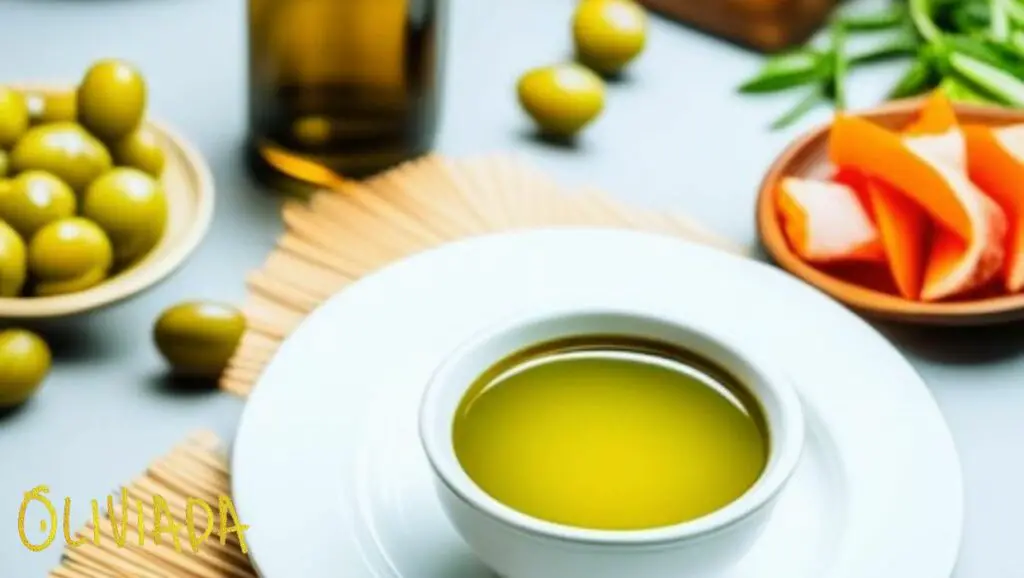
- What Does Olive Oil Harvest Date on the Bottle Mean?
- Is Produced Date the Same as Harvest Date?
- Difference Between Harvest Date and Expiration Date
- Why Is Harvest Date So Important?
- What Is the Best Harvest Date For Olive Oil?
- How to Decode Harvest Dates on Olive Oil Labels
- How Long Is Olive Oil Good After Harvest?
- How Harvest Dates Influence Flavor of Different Olive Varieties
- How Harvesting Practices and Timing Impact Olive Oil Quality
- Frequently Asked Questions
- Final Thoughts
What Does Olive Oil Harvest Date on the Bottle Mean?
The ‘Harvest Date’ refers to the day the olives were picked from the tree to make the oil. This date is significant as it is a factor in determining the freshness and quality of the olive oil, as well as providing insight into its unique taste profile.
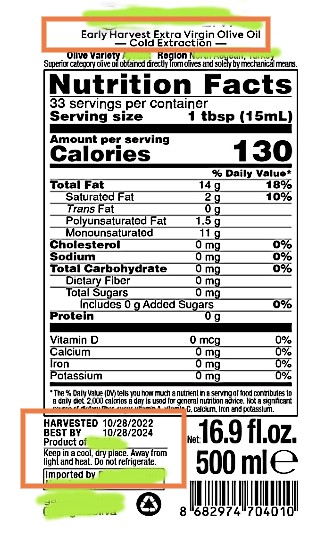
Every olive oil producing region has its unique harvesting season, which could be anytime from autumn to early spring. For example, in the sun-drenched region of Kalamata in Southern Greece, olive oil harvest typically kicks off in late November, extending into January. Meanwhile, in the scenic Tuscan hills of Italy, the olive harvest begins a touch earlier, usually from late October through November.
| Country/Region | Typical Harvesting Season |
|---|---|
| Greece (Kalamata) | November – January |
| Italy (Tuscany) | October – November |
| Spain (Andalusia) | October – November |
| California, USA | November – December |
| Tunisia | November – January |
| Turkey (Aegean Region) | November – December |
| Argentina | April – June |
| Australia (Victoria) | May – June |
Please note that these dates can vary based on weather, specific geographical areas within the regions, and the type of olive.
Can Harvest Date Be Missing on the Bottle Label?
While it’s an insightful detail for olive oil companies and consumers, the ‘Harvest Date’ absence on a bottle label doesn’t necessarily signify inferior quality. Companies may have legitimate reasons for omitting the ‘Harvest date’.
Consider this scenario: An olive oil produced in October, which is still sitting on the store shelf in November the following year, may lead customers to assume it’s past its prime, despite potentially having a whole year of optimal quality left (note olive oil in bottles has two years shelf life). This perception might even make retailers hesitate to restock from the same company if a product from the previous harvest is still on the shelf.
Is Produced Date the Same as Harvest Date?
While the “Harvest Date” and “Produced Date” might seem to refer to the same thing, they’re two distinct, essential steps in the journey of your olive oil from tree to table.
“Harvest Date” is when the olives are picked from the tree, ripe and ready. This date is a big deal in the olive oil extraction process as it hugely influences the ultimate flavor and quality of the oil.
“Produced Date” or “Production Date” is the day harvested olives take the limelight, transforming into olive oil. This transformation is quick, often a speedy 24 to 48 hours after harvest. High-quality organic olive oil is produced within 24 hours after harvest. Why the rush? Like any fresh produce, once olives are harvested, they start their natural decay process. So, to capture the freshness and quality, time is of the essence!
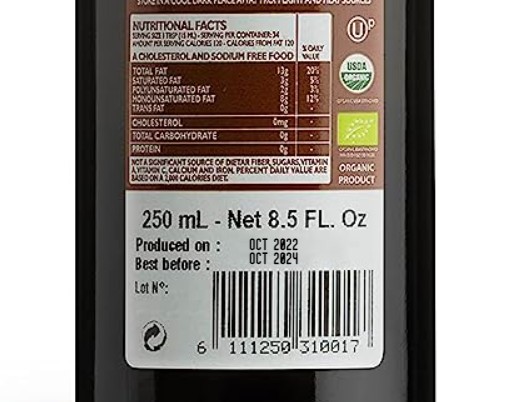
Difference Between Harvest Date and Expiration Date
Not every producer puts the “Harvest Date” and “Produced Date” on their labels (reasons explained in the section above); however, on the other side of the bottle, you’ll find the expiration date, also known as the ‘Best By’ or ‘Best Before’ date. This is the manufacturer’s way of saying, “Hey, our oil is at its best before this date.” This doesn’t mean the oil instantly goes bad after this date, but it’s likely to start losing its flavor and health benefits.
While the “Harvest Date” is a more reliable indicator of the oil’s freshness, the ‘Best By’ date is a helpful guide to ensure you’re enjoying your olive oil at its peak. Note: Olive oil isn’t like fine wine—it doesn’t get better with age!
You might also stumble upon a little advice on your bottle, suggesting how quickly you should finish the olive oil after cracking it open. Here’s a friendly tip: aim to use it within two months (60 days) of opening. Trust me, that’s your ticket to savoring the best flavor experience from your olive oil.
| Date | Impact on Olive Oil Shelf Life & Quality |
|---|---|
| Harvest Date | The fresher the oil (closer to this date), the better. Olives’ freshness and ripeness at harvest greatly affect the flavor and nutrient content. |
| Production Date | Once opened, oil should be used within two months (60 days) for the best flavor and quality, as exposure to air can speed up oxidation and degradation. |
| Best By Date | The producer recommends when the oil will retain optimal flavor and quality. Usually around 18-24 months after the harvest date, but it can vary. |
| Opening Date | Once opened, oil should be used within 2 months (60 days) for the best flavor and quality, as exposure to air can speed up oxidation and degradation. |
Note: storing your olive oil properly (in a cool, dark place and tightly sealed) will also help maintain its quality and extend its shelf life.
Searching for Premium Olive Oil?
Get OLIVIADA Olive Oil from Kalamata, GREECE!
Why Is Harvest Date So Important?
The ‘Harvest Date’ holds significant importance for two key factors: the freshness and flavor of your olive oil.
Freshness
Like any fruit, olives start their countdown to degradation as soon as they’re picked from the tree. So, the closer your olive oil extraction is to its harvest date, the fresher and potentially higher quality it is.
And in the case of extra virgin olive oil (EVOO), a fresher harvest date can often mean a richer, more vibrant flavor. It’s like getting your oil straight from the grove!
Flavor
If the olives were picked early in the season when they’re still somewhat green, you’re likely in for a grassier, peppery flavor in your oil. EVOOs from early harvests are often packed with health-boosting polyphenols.
Conversely, if the olives were harvested later when they’re more ripe, your EVOO will often have a milder, buttery taste. It’s all about your personal preference.
What Is the Best Harvest Date For Olive Oil?
Typically, the harvest season for olives falls between October and January, but the specific timing within that window can significantly affect the oil’s flavor and quality. The ‘best’ harvest date for you would depend on your flavor preferences:
- If you prefer a more robust and peppery oil, you might lean towards an early-harvest oil.
- You might prefer late-harvest olive oil with a milder, fruitier flavor.
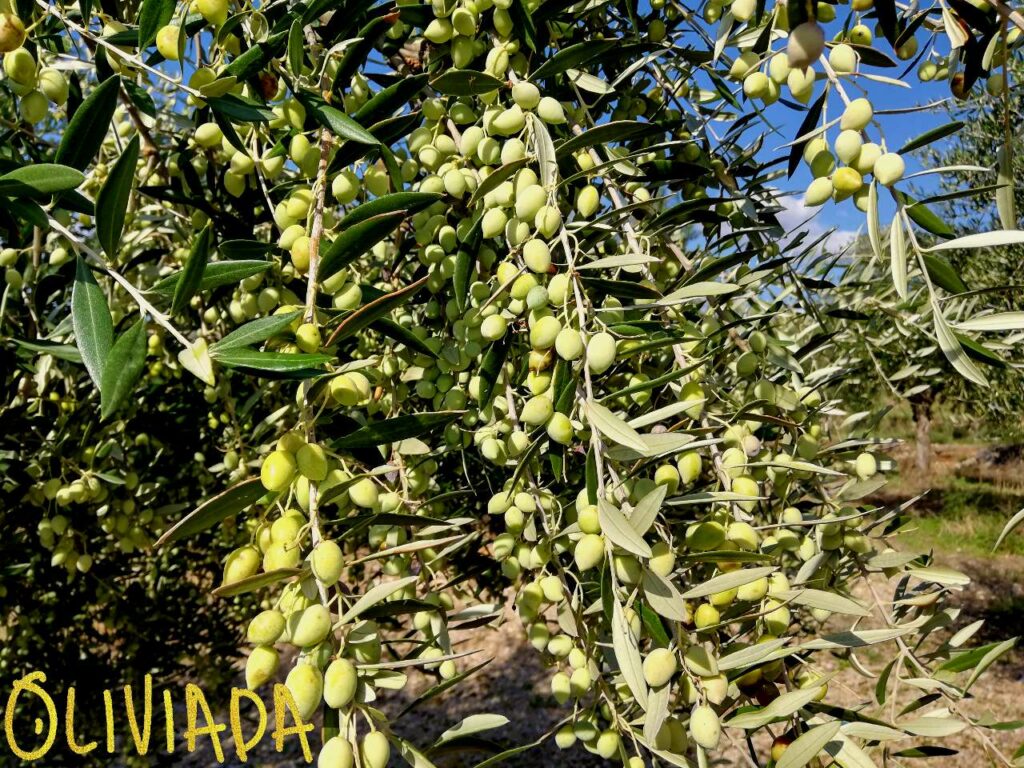
Early Harvest vs. Late Harvest Olive Oils
On one side, we have the early harvest oils produced at the beginning of the olive harvesting season. The olives are still a bit green, hanging onto their youth. When these youthful olives are pressed, they produce an oil that’s often robust with a bit of a bite. It’s got that characteristic peppery flavor that might make you cough a bit – that’s a sign of high-quality oil loaded with healthy antioxidants known as polyphenols.
On the other hand, we have the late harvest oils when the olives have had a bit more time to ripen under the warm sun. These olives, a little more mature and a bit more mellow, produce an oil that is typically fruitier and milder, with a buttery undertone.
- Early-harvest olive oils might be your match if you’re all about bold flavors and an extra health punch.
- Late-harvest olive oils could be your go-to choice if you’re into a smoother, more subtle taste.
Ultimately, determining the best harvest date for olive oil is a matter of personal taste. Would you prefer the early-harvest oil’s peppery kick or the late-harvest oil’s smooth buttery flavor? Regardless of your preference, note that fresher oil is always better.
| Harvest Period | Typical Flavor Profiles |
|---|---|
| Early Harvest (Greener Olives) | Strong, robust, grassy, herbaceous, peppery, high in polyphenols (antioxidants) |
| Mid-Harvest | Balanced, slightly fruity, medium polyphenol content |
| Late Harvest (Riper Olives) | Milder, buttery, smooth, sweeter, lower in polyphenols |
Again, remember that many factors can influence an olive oil’s flavor, including the olive variety, the region where they’re grown, weather conditions, and more.
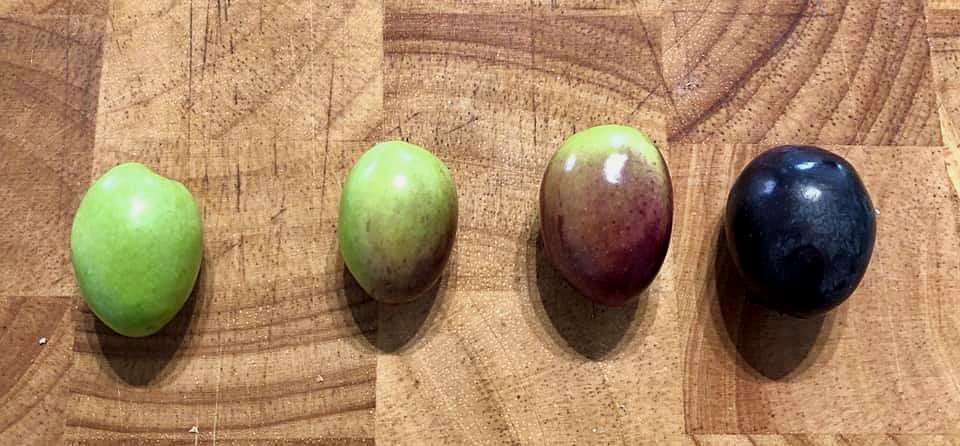
How to Decode Harvest Dates on Olive Oil Labels
If the harvest date is added to the bottle’s label, it is stamped on the back. It’s often labeled as ‘Harvest Date’, ‘Crop Year’, or ‘Harvest Year.’ The harvest date on the olive oil label usually follows a month-year format. For example, ‘October 2022’ means the olives were harvested in October of the year 2022. This is your first clue to the oil’s age – the closer we are to this date, the fresher the oil.
Generally, olive oil has a shelf life of around 18-24 months from when it’s bottled. So, doing a quick math will tell you if your oil is still in its prime. The fresher, the better – that’s the mantra.
The harvest date also gives you a peek into the oil’s flavor profile. Early in harvest (think October to November), olives are still a bit green, and their oil tends to be more robust and peppery. If you see a harvest date later in the season (like December or January), you’ll likely get a milder, fruitier oil.
How Long Is Olive Oil Good After Harvest?
Olive oil doesn’t age gracefully as some cheeses and wines do. Instead, from the moment the olives are harvested and the oil is extracted, we are on a time limit. The exquisite flavors and health-boosting properties are at their peak right after production; then they start to diminish slowly.
High-quality extra virgin olive oil, stored in ideal conditions – think cool, dark place and sealed tight – should retain its flavor and health benefits for around 18 to 24 months post-harvest. After this, even if the oil doesn’t necessarily ‘go bad,’ it might lose some characteristics that make it so special.
How Harvest Dates Influence Flavor of Different Olive Varieties
Olive oils can have different personalities based on their harvest date. Those that are harvested early tend to be bold and vibrant, while those harvested late tend to be mild and complex.d late tend to be mild and complex.
Let’s explore how to harvest dates might affect the flavor profiles of five popular olive varieties: Arbequina, Koroneiki, Picual, Kalamata, and Frantoio.
- Arbequina: This Spanish variety early harvest olive oil can deliver a grassy, peppery kick, while a later harvest yields a softer, buttery, and slightly nutty profile.
- Koroneiki: Native to Greece, Koroneiki olives give us a typically robust and fruity oil. If harvested early, expect a burst of fresh, green, slightly bitter notes. In a late-harvest oil, these flavors might mellow into a well-rounded fruity character.
- Picual: Hailing from Spain, Picual olives are incredibly high in polyphenols. Early harvest Picual oil often packs a peppery punch and a lovely tomato leaf aroma. A later harvest might offer a balance of fruity and spicy flavors.
- Kalamata: These famous Greek olives, when harvested early, create an oil with a robust, fruity flavor and a peppery finish. A later harvest brings out deeper, mellow flavors, often with dried fruit and spice notes.
- Frantoio: This Italian Frantoio early harvest olive oil can have a complex, herbaceous, and slightly bitter profile, while a later harvest softens into a delicate, fruitier flavor.
Note: these are general trends, and actual flavors can vary based on numerous factors, including the growing conditions and the specific techniques the producer uses.
How Harvesting Practices and Timing Impact Olive Oil Quality
Olive oil quality is a harmonious blend of the right harvesting practices, timely harvests, and, of course, the perfect olive variety.
Harvesting Practises
Hand-harvesting is often preferred by quality-conscious producers as it prevents bruising the olives, which could lead to lower quality oil.
Some producers may use mechanical tools to expedite the process, but this can sometimes compromise the quality of the oil.
The best oils are typically those where time and care have been invested in harvesting.
Timing
Early in the harvest season, when olives are still green, the oil produced is often pungent and rich in antioxidants. These punchy, robust flavors are often associated with premium, high-quality olive oils.
But, as the season wears on, the olives ripen and their oil takes on a smoother, more buttery flavor. Harvest timing can significantly influence these shifts in flavor and overall quality. However, we can’t talk about harvest timing without mentioning the olive variety.
Take, for example, the Koroneiki olive, often called the ‘queen of olives‘. This Greek variety is usually harvested when fully ripe, producing oil that’s truly exceptional in quality. Despite the later harvest, Koroneiki olives manage to yield superior oil, further proving that when it comes to olive oil, quality isn’t just about the ‘how’ and ‘when.’ The ‘what’ – the variety of olive – plays a crucial role too.
Looking for a Personalized Gift?
Adopt an OLIVE TREE in Greece –
Receive Premium Olive Oil!
Frequently Asked Questions
What if There’s No Harvest Date on the Label?
While the harvest date is an excellent guide to freshness and potential quality, its absence doesn’t necessarily mean the oil is lower quality. Some producers may choose not to include it for various reasons, such as market dynamics.
What Month Are Olives Harvested?
The exact month can vary based on the olive variety and the region where they’re grown. In general, olive harvesting season can start as early as September and extend into spring.
Does Harvest Date Affect Olive Oil Quality?
Absolutely! Early harvested olives produce oil with a grassier, peppery flavor, and higher antioxidant content. On the other hand, later harvested olives yield oil with a milder, buttery flavor.
Is the Harvest Date the Same as the Produced or Bottling Date?
Not exactly. While the dates may be close, the harvest date refers to when the olives were picked, and the produced date indicates when these harvested olives were processed into oil.
How Do You Read the Harvest Date of Olive Oil?
The harvest date on the olive oil label usually follows a month-year format. For example, ‘October 2022’ means the olives were harvested in October of the year 2022.
How Old Should the Harvest Date Be on Olive Oil?
Ideally, you should aim for olive oil within 18-24 months of its harvest date. This is when the oil maintains its top quality regarding aroma, flavor, and nutritional benefits.
Final Thoughts
In conclusion, the olive oil harvest date is important in unlocking its optimal flavor, freshness, and nutritional value. By considering its influence on taste, such as whether it is robust and peppery or mild and fruity, as well as its impact on nutritional content and shelf life, we can utilize the harvest date as a guide to enhance our overall olive oil experience.
And hey, if you want to immerse yourself in the olive oil production process, why not consider growing your olive tree? Whether in your backyard or a pot on your balcony, nurturing an olive tree is rewarding. Plus, making your olive oil at home using the oil press machine offers a hands-on opportunity to understand the extraction process truly.
Related Topics
Hi, I’m Vangelis Kleftogiannis, the founder of Oliviada and an established olive oil expert from Kalamata, Greece. My expertise isn’t just in producing quality Extra Virgin Olive Oil, but also in the cultivation and care of olive trees themselves. I am deeply committed to sharing my knowledge and know-how, helping others understand the intricacies of olive tree growing and the creation of quality olive oil.
